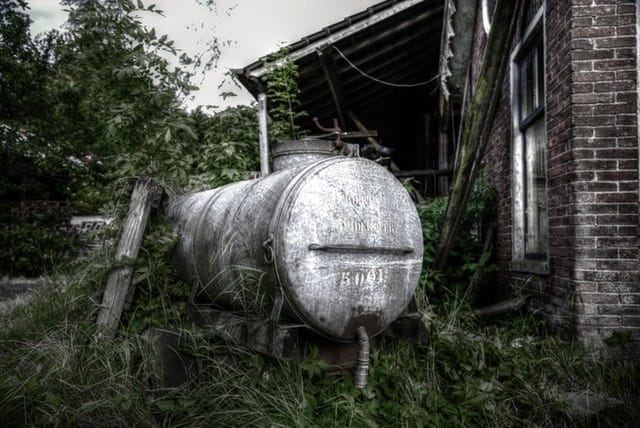
In our last post, we began to review the basic considerations for a Phase II ESA. We wanted you to have a chance to absorb a lot of complicated information. So we saved some of the good points: here are the rest of the 5.5 things you should know about Phase II ESAs.
3. Scope: There is quite a bit of diversity of scope among Phase II ESAs. Therefore, working with an experienced and technically savvy consultant is essential. As noted in Part 1 of this blog, depending on the types of RECs identified in the Phase I ESA, a consultant will advise, among other things: (i) what media to sample (geophysical, soil, groundwater, soil vapor?); (ii) where to drill boring holes; (iii) how many samples to take; (iv) which contaminants to look for; (v) which detection methods to use; and (vi) other considerations.
Consultants sometimes tend to get aggressive or want to be able to justify to governmental agencies later on decisions made, and thus may take more samples than really necessary. This assumes an unlimited budget. The attorneys at Periconi, LLC understand that budgets may be limited. Our attorneys work with consultants, owners, and buyers to tailor the scope to the needs and wallet of the prospective buyer/lender and tolerances of the seller.
4. Co-Sampling: Sometimes, parties may disagree about the scope of sampling. These disagreements typically arise in litigation or when there is significant owner pushback. If you, as the owner, are found in a hostile situation, we recommend co-sampling. At the very least, we recommend to our seller clients that they retain their own environmental consultant to shadow the buyer’s consultant on the day(s) of sampling to ensure that proper sampling protocol are followed, and even to take “split samples” as a form of reassurance about the validity of the data that may have multi-million-dollar consequences. In this case, your consultant should also be tasked with reviewing and analyzing for you any raw data – not just the buyer’s consultant’s summary tables!
5. A Phase II ESA is a worthwhile investment: A barebone Limited Phase II (i.e., shallow soil sampling with just four soil borings around an old buried oil tank) will cost at least $10,000. But chances are, your investigation will be looking into more than that. Although we understand that budgets are not unlimited, we also think you will be setting yourself up for potential future headaches if you don’t perform a proper subsurface investigation. If money is an issue, this part of the process will require creativity from your consultant and input from your environmental attorney to ensure that you’re looking out for all potential risks called out in the Phase I ESA. Don’t just ask for the cheapest Phase II ESA – you’re better off not performing a Phase II ESA at all.
5.5 DEC requires sampling for 5 Emerging Contaminants: We added this as an extra consideration because emerging contaminants are the new kids on the block – so why not mention them here? While New York is considering adopting new standards for “emerging” contaminants in drinking water, including per- and polyfluoroalkyl substances (PFAs) and, 1,4-Dioxane, the New York State Dept. of Environmental Conservation has required that these chemicals be sampled at all new Brownfield Cleanup Program and State Superfund sites. Because the impacts of these contaminants are unknown and possibly pervasive, any consultant worth his degree should suggest that sampling for these contaminants be added to list (should the Phase II ESA call for groundwater sampling).
In fact, New York State’s Departments of Health and Environmental Conservation are on the cusp of setting very stringent standards for these contaminants, measured in the parts per trillion. Just two months ago, the New York State Drinking Water Quality Council recommended that the Department of Health adopt a maximum contaminant limit (MCL) of 10 parts per trillion for PFAs and related contaminants. These levels would be the lowest in the nation!
Finally, you must consider the nuanced difference between a Phase II ESA and a Limited Phase II ESA. A full-blown Phase II ESA has precise standards that must be adhered to, namely those requirements enumerated in ASTM E1903-97, or the Standard Guide for Environmental Site Assessments: Phase II Environmental Site Assessment. The guide covers a framework for employing good commercial and customary practices in conducting a Phase II environmental site assessment of a parcel of commercial property.
If you are a buyer or lender who just wants enough data to determine the existence or absence of contamination, period, some of the Phase II ESA requirements are burdensome or unnecessary for your goals. Therefore, you may opt for a “limited” Phase II ESA instead. Limited Phase II ESAs are just that: subsurface investigations that are limited in scope and not performed pursuant to the ASTM standards. There are no practical implications of performing a Limited instead of a full-blown Phase II ESA. You will still adhere to the principles of the U.S. Environmental Protection Agency’s All Appropriate Inquiries (AAI) rule and be on your way to insuring that you’ve obtained Superfund liability protection by performing a Limited Phase II ESA.
As explained here, the attorneys of Periconi, LLC have reviewed hundreds of ESA reports and prepared many Attorney Review Letters (ARLs). An ARL synthesizes environmental investigation reports, that typically run from dozens to hundreds of pages, to a handful of pages, highlighting just the most important issues.
There is a lot to unpack with subsurface investigations. For that reason, all parties in a commercial real estate transaction should get environmental attorneys involved to help them through this process.
Contact the attorneys of Periconi, LLC at (212) 213-5500 if you are considering a Phase II ESA or for general information regarding environmental due diligence.

